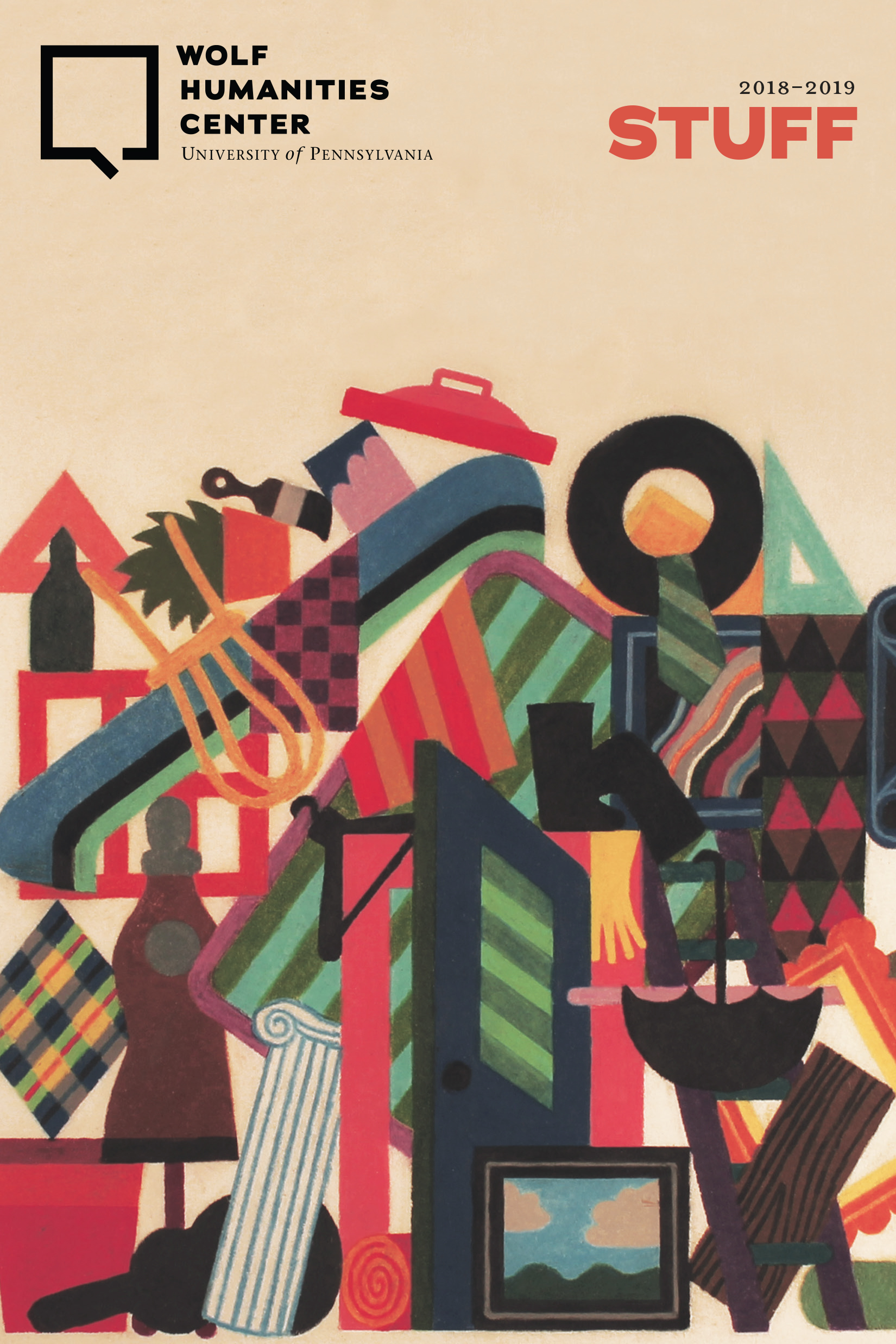Topic Director: Julie Nelson Davis
Professor of History of Art
Stuff: it’s all around us. It needs a place and takes up space, filling our rooms, houses, garages, offices, and minds. It defines us and reminds us. Too little can unsettle us, too much can overwhelm us. But why are we so obsessed with stuff? Why do we want more? Why do we keep so much? How do we get rid of it? Why does its loss seem so profound? Why does our stuff matter? It’s just stuff, isn’t it?
Our stuff describes us. Selecting just the right stuff, and placing it just so, is considered an art, in designing, building, and curating our environments. What stuff is made of, how to replicate, measure, and document it, is pursued in labs, factories, libraries, kitchens, and more. Stuff is protected, handed down from generation to generation, the legacy (or burden) of those that came before. Stuff from the past can become relic-like, uncannily recalling through its weight and tangibility the touch and feel of another person, place, and time. Stuff can be recycled, but often it’s turned into junk, made worthless, tossed, and burned. Sharing stuff is a virtue, stealing it is a crime. Profiting from it may be mercenary, hiding it deemed greedy. How we manage stuff is assessed and critiqued: to cache signals readiness, but to hoard is a pathology. And yet the stuff of life sustains us.
Nations, politics, economies, and relationships are founded on the exchange, management, and access of stuff in the form of land, property, commodities, bodies, and more. The divide between those who have and those who do not have defines the status of nation-states as well as individuals in the global economy. Producing and consuming, trading and gift-giving, storing and disposing—stuff is ever-present in the circulation of commodities. The legal status of stuff, whether tangible or not, may dictate its possession, repatriation, or other usage. Some stuff is valued, ranked, and collected, as priceless antiquities, works of art, documents, and property in archives, libraries, and museums, preserved, conserved, and restored. Some is the subject of long-standing contention over patrimony and national identity.
As a word stuff fills in for what we have forgotten or for what we don’t want to speak aloud. We elect to defer specificity and interrogation through its vagueness and insubstantiality. Bodily parts, sexual acts, and illegal materials are likewise covered up, with the potentially obscene and dangerous temporarily contained by the linguistic tic of stuff as a euphemism. As a verb, stuff crams, rams, and jams, pressing and pushing.
The informality and occasional discomfort that “stuff” brings in its Anglo-Saxon brevity is often shifted in polite discourse into variations on matter, material, and materiality. These variations in terms and their further associations lend further nuance, but these terms all return to something fundamental about the physicality of stuff. These things that surround us, and that fill in for what is lacking, embody our values and beliefs.
Thinking anew about stuff informs our reading of the past and the present, confronts our hermeneutic practices, and returns our objects of inquiry to be representative of their technological, cultural, social, political, and economic contexts. The recent “material turn” in the humanities represents a return to thinking about the stuff from which things are made. In turning toward matter, it is also seen by some as a turning away from “pure theory” as well as contesting the rise of the digital and of virtual reality, while others propose melding materiality with the theoretical.
In our 2018–2019 Forum on Stuff, the Wolf Humanities Center will focus on the madeness and the physicality of our cultural lives. Has the rise of digital and virtual culture fundamentally altered our thinking about materiality, or just given us more stuff to think about? Could a more concerted effort to understand our relations to stuff assist us in in a time of political turmoil, increasing scarcity of resources, and escalating environmental dangers, when the sheer volume of stuff we make, consume, and discard threatens the very ecosystems that sustain us? Can we solve what George Carlin said was the great problem of contemporary life, that of finding a place for our stuff?
Julie Nelson Davis, Professor of History of Art; Topic Director, Forum on Stuff
Karen Redrobe, Elliot and Roslyn Jaffe Endowed Professor in Film Studies
May 2017



